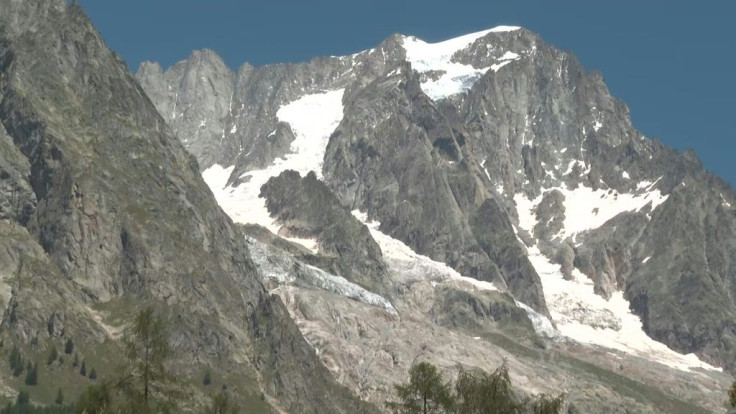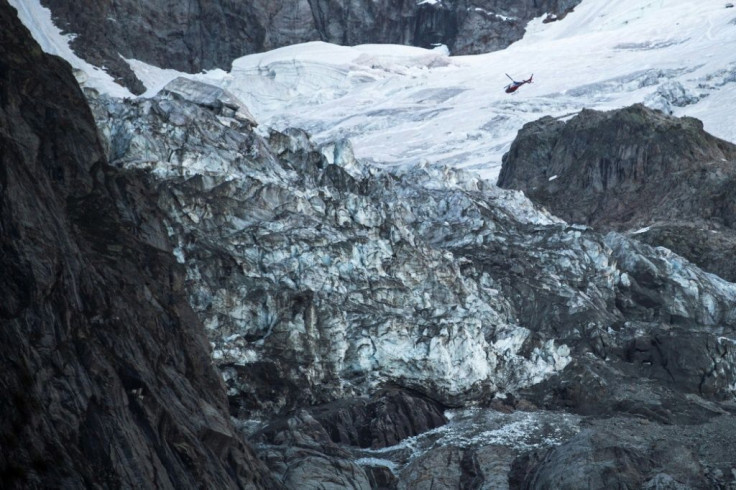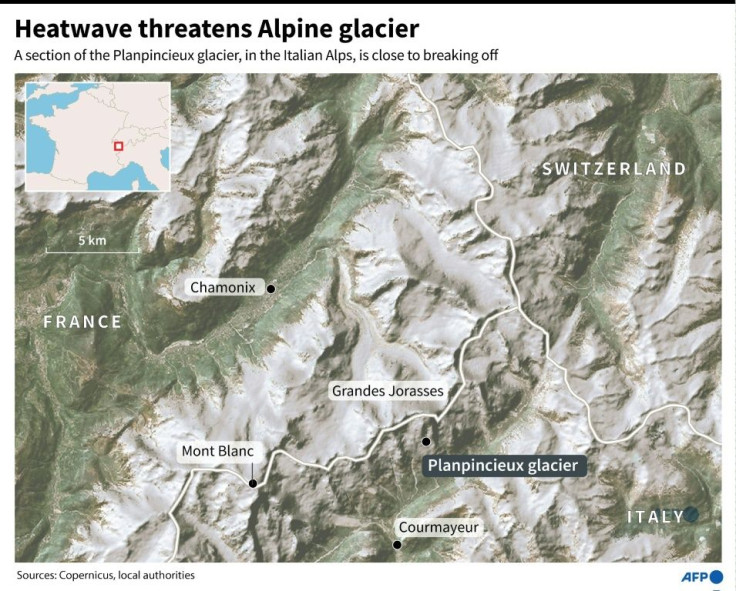'Slight Improvement' In Melting Glacier Threatening Italy Resort
The threat that a massive chunk of glacier loosened by soaring temperatures could collapse near an alpine resort on the Italian side of the Mont Blanc mountain range has slightly eased, a local mayor said Saturday.
Security measures around the danger area were being "gradually relaxed", local officials said.
Climate change has been increasingly melting the world's glaciers, creating a new danger for the town of Courmayeur, a resort community in Italy's Aosta Valley region, near the French border.
The town was put on high alert on Wednesday as a block of ice estimated at about 500,000 cubic metres -- the size of the Milan cathedral, one official said -- from the Planpincieux glacier risked falling and threatening homes.

A "red zone" at the base of the slope was also evacuated, with 20 residents and around 55 holidaymakers moved from the area.
Earlier Courmayeur mayor Stefano Miserocchi said Saturday that things were looking up.
"We are in a phase of slight improvement, the situation is a little better," he told AFP.
"However we have not yet returned to the situation before the closure," of the road to Val Ferret, a small valley normally busy with tourists at this time of year, he added.

An alternative one-way road was being made accessible from Saturday for those living in Val Ferret who wish to travel down and out of the area and for those with reservations elsewhere in the area.
Some locals were dismissive of the closure, lamenting that it further affected a tourism season already hit by coronavirus measures.
However Mayor Miserocchi said it was "urgent and vital" to move people directly in the path of a potential ice fall, as more scorching temperatures are forecast over the coming days.
Ludovic Ravanel, a researcher at the University of Savoie Mont Blanc who studies glaciers and rockfalls in the Alps, defended the decision to evacuate the area.

"We cannot leave people under the threat of such an avalanche of ice," he told AFP.
Aosta Valley natural risk management director Valerio Segor said the situation was "especially delicate" because the heat "upsets the water level between the ice and the rock, and in turn the stability of the glacier."
He said the problem was "that not enough water can escape, it stays under the glacier like a bubble and risks lifting it up" -- which could tip its most fragile section to tumble into the valley, Segor told AFP earlier in the week.
But Miserocchi said Saturday that "the circulation of water under the glacier has resumed... it was this point that worried us a lot".
During a helicopter flypast, an AFP reporter saw a gaping chasm on the lower part of the Planpincieux, from which two cascades of water flowed towards the valley, as it hung from the mountainside like a gigantic block of grey polystyrene.
Researcher Ravanel said that Planpincieux's "link with global warming is obvious".
There are more than 4,000 glaciers -- vast, ancient reserves of ice -- dotted throughout the Alps, providing seasonal water to millions and forming some of Europe's most stunning landscapes. But they are under severe threat from climate change.
In September and October last year, the Planpincieux glacier also threatened a partial collapse, after which extra surveillance measures were put in place.
A study last year by Swiss scientists found that Alpine glaciers could shrink between 65 and 90 percent this century, depending on how effectively the world can curb greenhouse gas emissions.
© Copyright AFP 2024. All rights reserved.





















